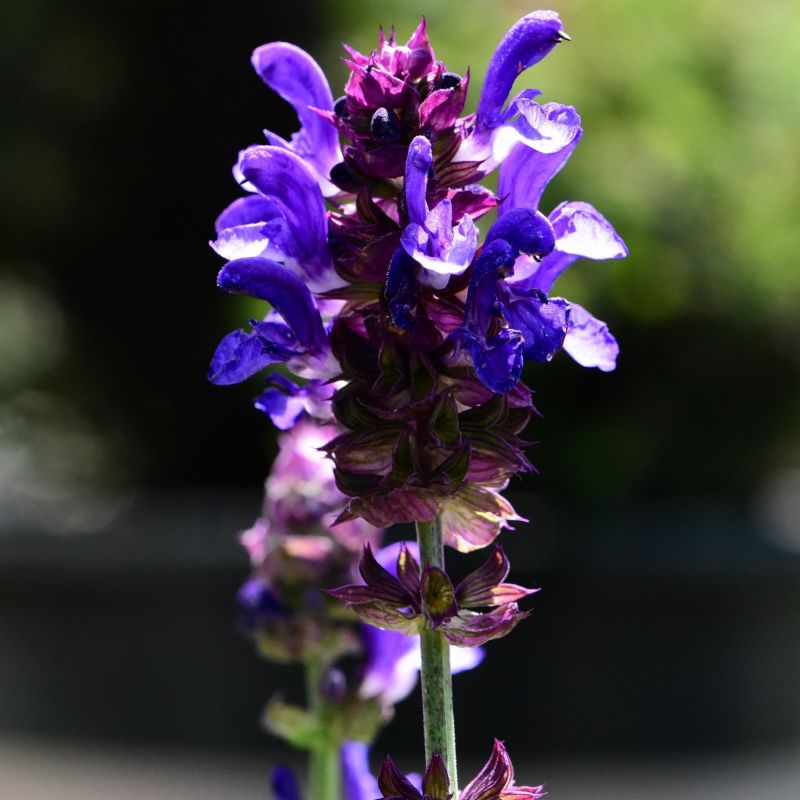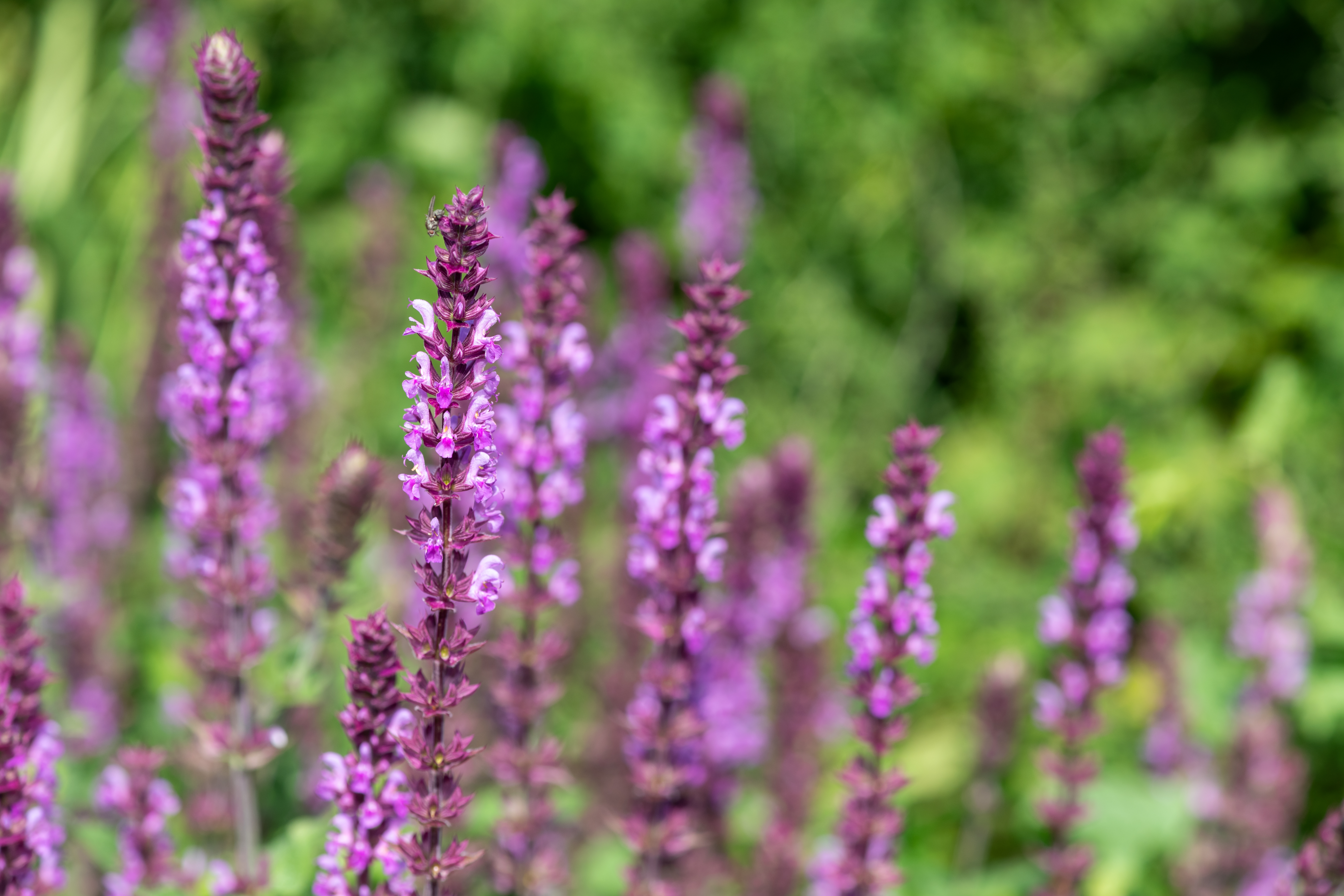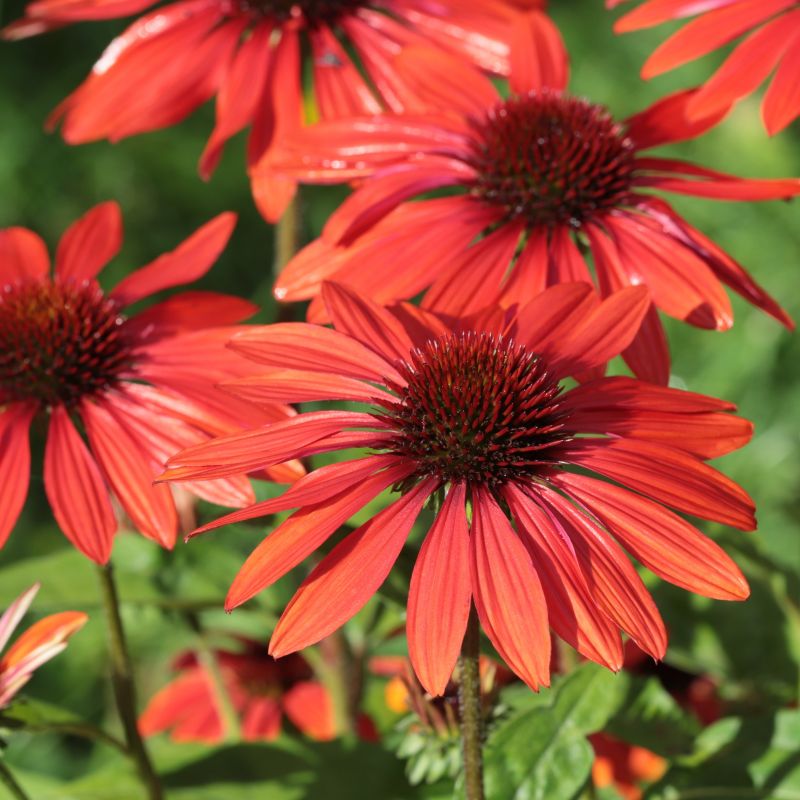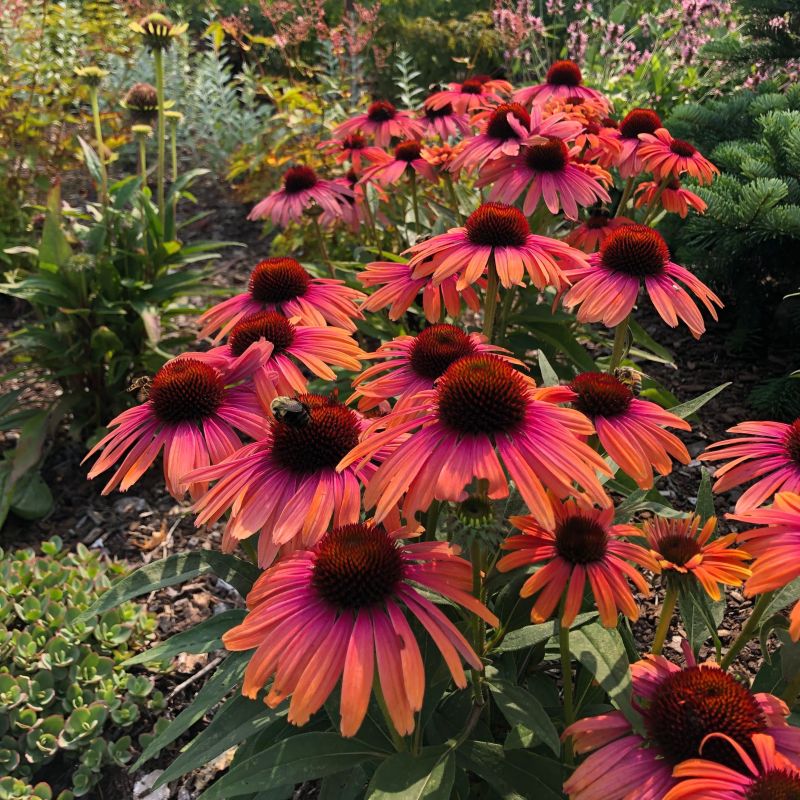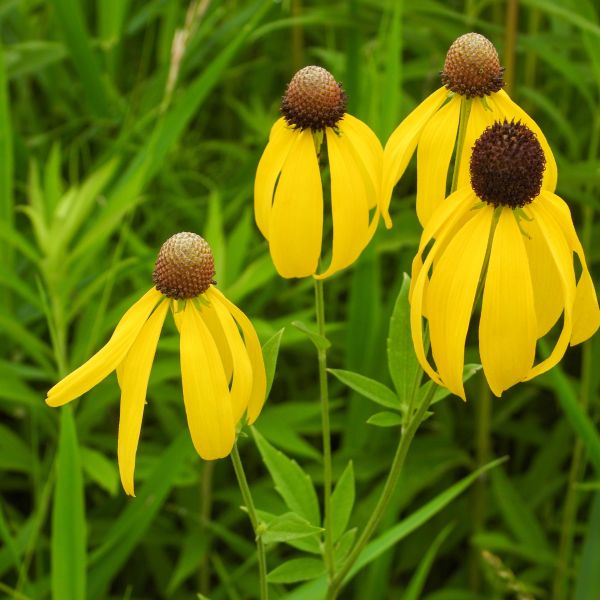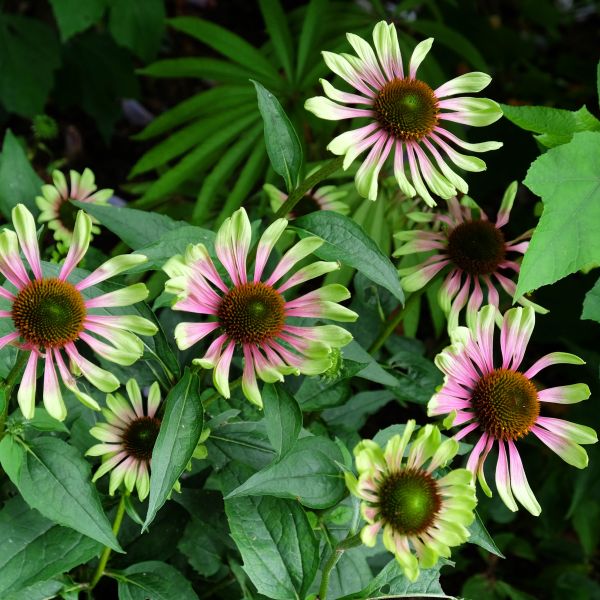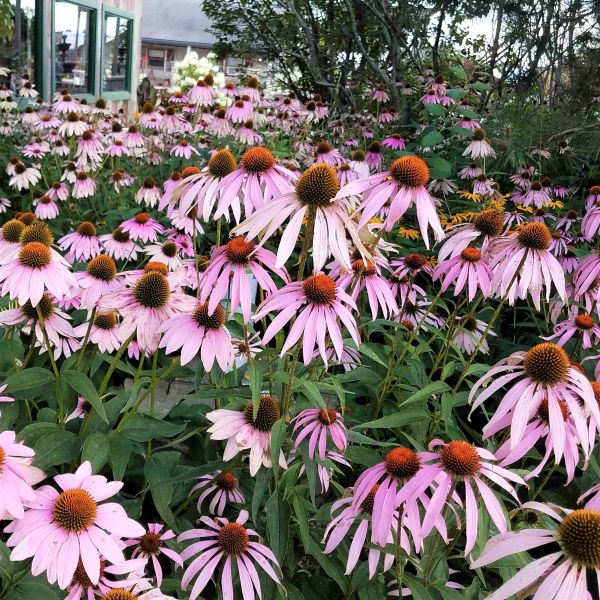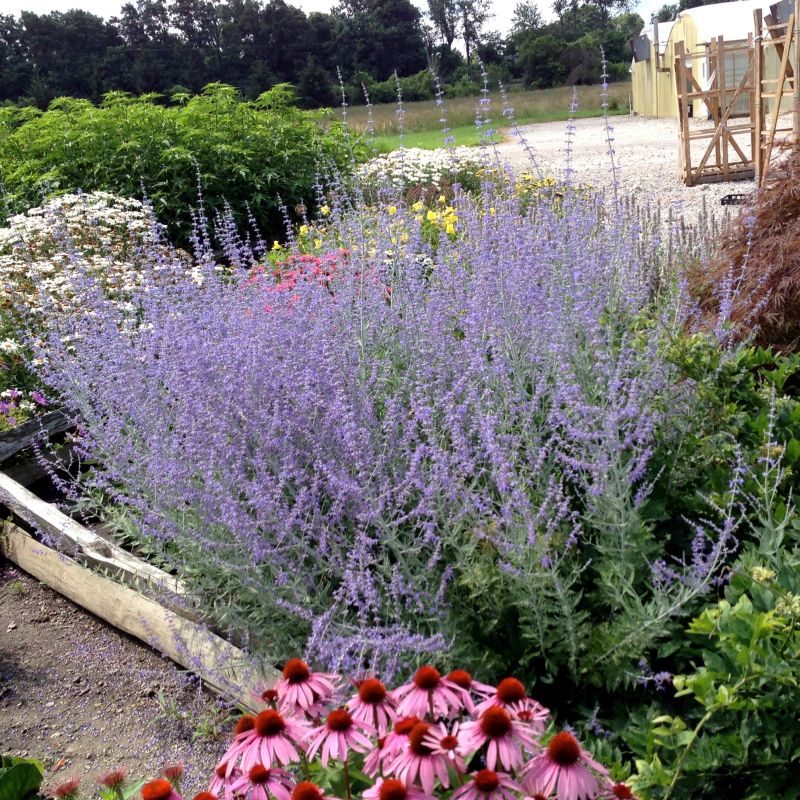
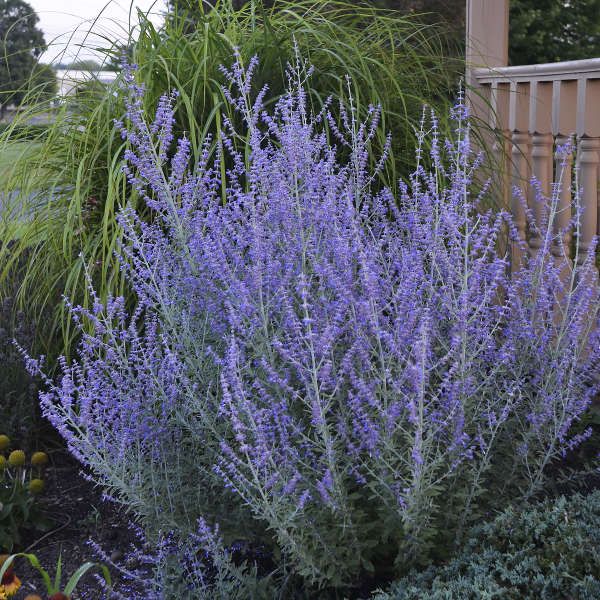
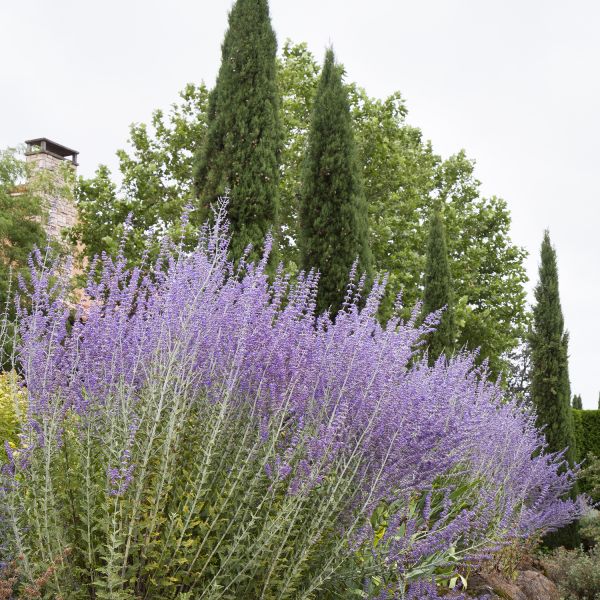
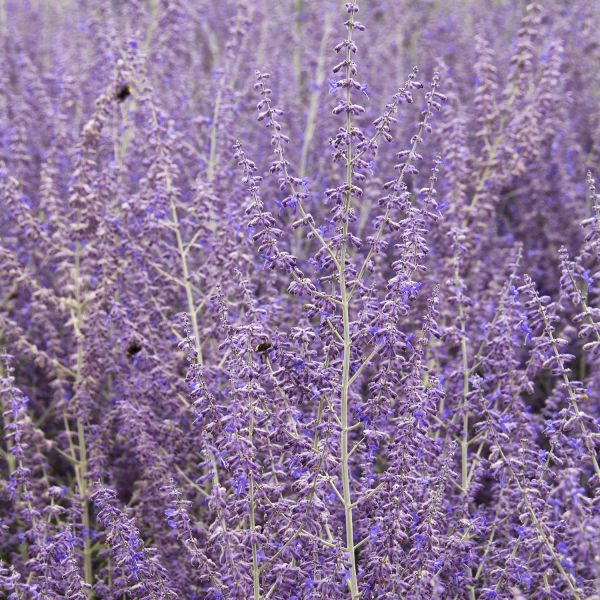
Russian Sage
Salvia yangii
18 reviews
Russian Sage
Salvia yangii
18 reviews
- Drought tolerant
- Attracts pollinators
- Deer resistant
$39.00
$56.00
30% Off
- Ships to 43215 in 3 to 7 days
- Free Shipping Over $150
- Plant Arrival Guarantee
- In Stock
- Free Plant Consult
$200
- 1 Gallon
- 3.5 Gallon
Why Russian Sage?
Russian Sage (Perovskia atriplicifolia) is a low-maintenance perennial plant native to central Asia. It is often chosen for its aromatic silver-gray foliage and abundant showy lavender-blue flowers that attract butterflies and bees. This hardy plant can tolerate dry conditions, poor soil, and is resistant to deer and rabbits. It is a beautiful addition to any garden or landscape, providing color and texture while requiring minimal care.
People who loved this plant also bought
Sunlight
Russian Sage requires full sun. It should be planted in a location that receives at least six to eight hours of direct sunlight each day for it to thrive and bloom abundantly.
Watering
Russian Sage (Perovskia atriplicifolia) is a drought-tolerant plant and requires low to moderate watering. It prefers well-drained soil and should be watered deeply but infrequently, allowing the soil to dry out between waterings. Overwatering can lead to
Fertilizing
Russian sage (Perovskia atriplicifolia) prefers well-drained soil and does not typically require a lot of fertilizer. It is best to apply a balanced, slow-release fertilizer in spring to promote healthy growth and blooming. Avoid excessive nitrogen, as it
Russian Sage (Perovskia atriplicifolia)
Description:
Russian Sage (Perovskia atriplicifolia) is a drought-tolerant perennial plant that is native to the arid regions of Central Asia. It is a member of the mint family, Lamiaceae, and is known for its airy, silver-gray foliage and vibrant spikes of purple-blue flowers.
The plant typically grows to a height of 2 to 4 feet and spreads to about 3 to 4 feet, forming an upright, bushy habit. The foliage consists of lacy, aromatic leaves that are deeply divided and give off a pleasant fragrance when crushed. In the summer, the plant is adorned with tall, slender flower spikes that rise above the foliage, providing vertical interest in the garden.
The flowers of Russian Sage are tubular and densely packed along the spikes, creating a striking display of color. They attract bees, butterflies, and other pollinators, making it a popular choice for pollinator gardens. The flowers also have a long-lasting quality and can be used for dried arrangements or flower crafts.
Features:
- Drought-tolerant and suitable for xeriscaping
- Silver-gray foliage adds contrast and texture to the garden
- Produces vibrant purple-blue flowers that bloom throughout summer
- Aromatic leaves emit a pleasant fragrance
- Attracts bees, butterflies, and other pollinators
- Tolerates a wide range of soil types and growing conditions
- Low maintenance and deer-resistant
Uses:
Russian Sage is a versatile plant that can be used in various garden settings:
- As a border or edging plant
- In rock gardens or dry landscapes
- In perennial beds or mixed flower borders
- At the back of the flower bed for height and vertical interest
- In wildlife gardens or pollinator-friendly landscapes
- For cut flowers or dried arrangements
Overall, Russian Sage is a beautiful and resilient plant that adds elegance and versatility to any garden. Its striking appearance, drought tolerance, and ability to attract pollinators make it a desirable choice for both experienced and novice gardeners.
Plant Information:
| Botanical Name: | Salvia yangii |
| USDA Zones: | 5 - 8 |
| Water: | Moderate to Low |
| Exposure: | Full Sun |
| Soil Needs: | Well Drained |
| Mature Height: | 3 - 4 feet |
| Mature Spread: | 2 - 3 feet |





Pollination Info
Russian Sage (Perovskia atriplicifolia) Pollination Info
Russian Sage, scientifically known as Perovskia atriplicifolia, belongs to the Lamiaceae (mint) family. It is a perennial flowering plant native to Central Asia, particularly in regions of Pakistan and Afghanistan. Here is some detailed pollination information about Russian Sage:
Pollination Mechanism:
Russian Sage primarily relies on insect pollinators to achieve successful pollination. It attracts a wide range of pollinators, including bees, butterflies, and other nectar-seeking insects.
Flower Characteristics:
The flowers of Russian Sage are small, tubular, and densely clustered on upright spikes. They are typically purplish-blue in color and have long, prominent stamens. The flowers have a sweet fragrance that further attracts pollinators.
Pollinators:
Bees, especially honeybees and bumblebees, are highly attracted to the nectar-rich flowers of Russian Sage. They visit the flowers to collect nectar and inadvertently transfer pollen from one flower to another, facilitating cross-pollination.
Butterflies, such as swallowtails and monarchs, also visit Russian Sage for nectar. While they may not be as efficient as bees in pollination, they can contribute to the transfer of pollen.
Pollination Process:
When pollinators visit Russian Sage flowers in search of nectar, they brush against the stamens, which are laden with pollen. Some of the pollen adheres to the bodies of the insects due to their hairy or sticky surfaces.
As the pollinators move from flower to flower, they inadvertently deposit the pollen they carry onto the stigma, the receptive surface of the flower's female reproductive organs. This leads to fertilization and the formation of seeds.
Importance of Pollination:
Pollination is a vital process for Russian Sage as it ensures the production of seeds for future generations. The transfer of pollen between flowers allows for genetic diversity, leading to healthier and more robust individuals.
Additionally, Russian Sage flowers serve as important food sources for pollinators, helping to support their populations and the overall biodiversity of the ecosystem.
FAQ
Russian Sage (Perovskia atriplicifolia) FAQ
1. What is Russian Sage?
Russian sage (Perovskia atriplicifolia) is a perennial flowering plant native to Central Asia. It is widely admired for its aromatic silver-gray foliage and long-lasting purple-blue flowers.
2. How tall does Russian Sage grow?
Russian Sage typically grows to a height of 3-5 feet (0.9-1.5 meters) and spreads about 2-4 feet (0.6-1.2 meters) wide.
3. When does Russian Sage bloom?
Russian Sage blooms from mid-summer to early fall, producing abundant spikes of small, tubular lavender-blue flowers. The blooming period can last up to 2-3 months.
4. What are the growing requirements for Russian Sage?
Russian Sage thrives in full sun and well-draining soil. It is drought-tolerant once established and performs best in hot and dry climates. It is hardy in USDA zones 4-9.
5. How do I plant Russian Sage?
To plant Russian Sage, choose a sunny location with well-draining soil. Dig a hole slightly larger than the root ball of the plant. Place the plant in the hole, making sure the top of the root ball is level with the ground. Backfill the hole with soil and water thoroughly.
6. Does Russian Sage require pruning?
Russian Sage benefits from annual pruning in early spring. Cut back the woody stems to about 6-12 inches (15-30 cm) above the ground to encourage new growth and maintain a more compact shape.
7. How often should I water Russian Sage?
Once established, Russian Sage is fairly drought-tolerant and does not require frequent watering. Water deeply but infrequently, allowing the soil to dry out between waterings. Overwatering can lead to root rot.
8. Does Russian Sage attract pollinators?
Yes, Russian Sage is highly attractive to pollinators, including bees, butterflies, and hummingbirds. Its nectar-rich flowers serve as a valuable food source for these beneficial insects.
9. Can Russian Sage be grown in containers?
Yes, Russian Sage can be successfully grown in containers. Ensure the container has good drainage and use a well-draining potting mix. Place the container in a sunny location and water regularly but sparingly.
10. Are there any common pests or diseases that affect Russian Sage?
Russian Sage is generally pest and disease-resistant. However, it may occasionally attract aphids or suffer from powdery mildew if grown in overly humid conditions. Regularly inspect the plants and take appropriate measures if any issues arise.
Remember to consult a local gardening expert or nursery for specific advice tailored to your region and climate.
Planting & Care
Russian Sage (Perovskia atriplicifolia) Planting & Care:
Planting:
- Choose a sunny location with well-draining soil for planting Russian Sage.
- Prepare the planting hole by digging a hole that is slightly wider and deeper than the plant's root ball.
- Gently remove the plant from its container and loosen any tangled roots before placing it in the hole.
- Backfill the hole with soil, making sure the plant is at the same level as it was in the container.
- Water thoroughly after planting to settle the soil around the roots.
Care:
- Watering: Russian Sage is drought-tolerant once established, but regular watering is necessary during the first growing season. Water deeply but infrequently to encourage deep root growth.
- Fertilizing: Russian Sage generally does not require frequent fertilization. Apply a balanced slow-release fertilizer in early spring if necessary.
- Pruning: Prune Russian Sage in early spring by cutting back the woody stems to about 6-12 inches above the ground. This encourages new growth and prevents the plant from becoming too leggy.
- Dividing: Every few years, divide Russian Sage to maintain its vigor. Dig up the plant in early spring or fall, and divide the root ball into smaller sections. Replant the divisions in well-prepared soil.
- Pest and Disease Control: Russian Sage is generally resistant to pests and diseases. However, it might occasionally attract aphids or develop powdery mildew. Monitor the plant regularly and address any issues promptly with organic pest control methods if required.
- Winter Care: In colder regions, Russian Sage may die back to the ground in winter. Mulch around the plant's base to protect the roots from freezing temperatures.
Check Out These Verified Customer Reviews:
Customer Reviews
4.7 out of 5 based on 18 reviews
Thank you! Your review has been submitted.
Impressed with the quality of Russian Sage, healthy and vibrant. Fast shipping too!
Great quality, highly recommend
Beautiful plant, thriving in my garden
Item has been added to your cart.




